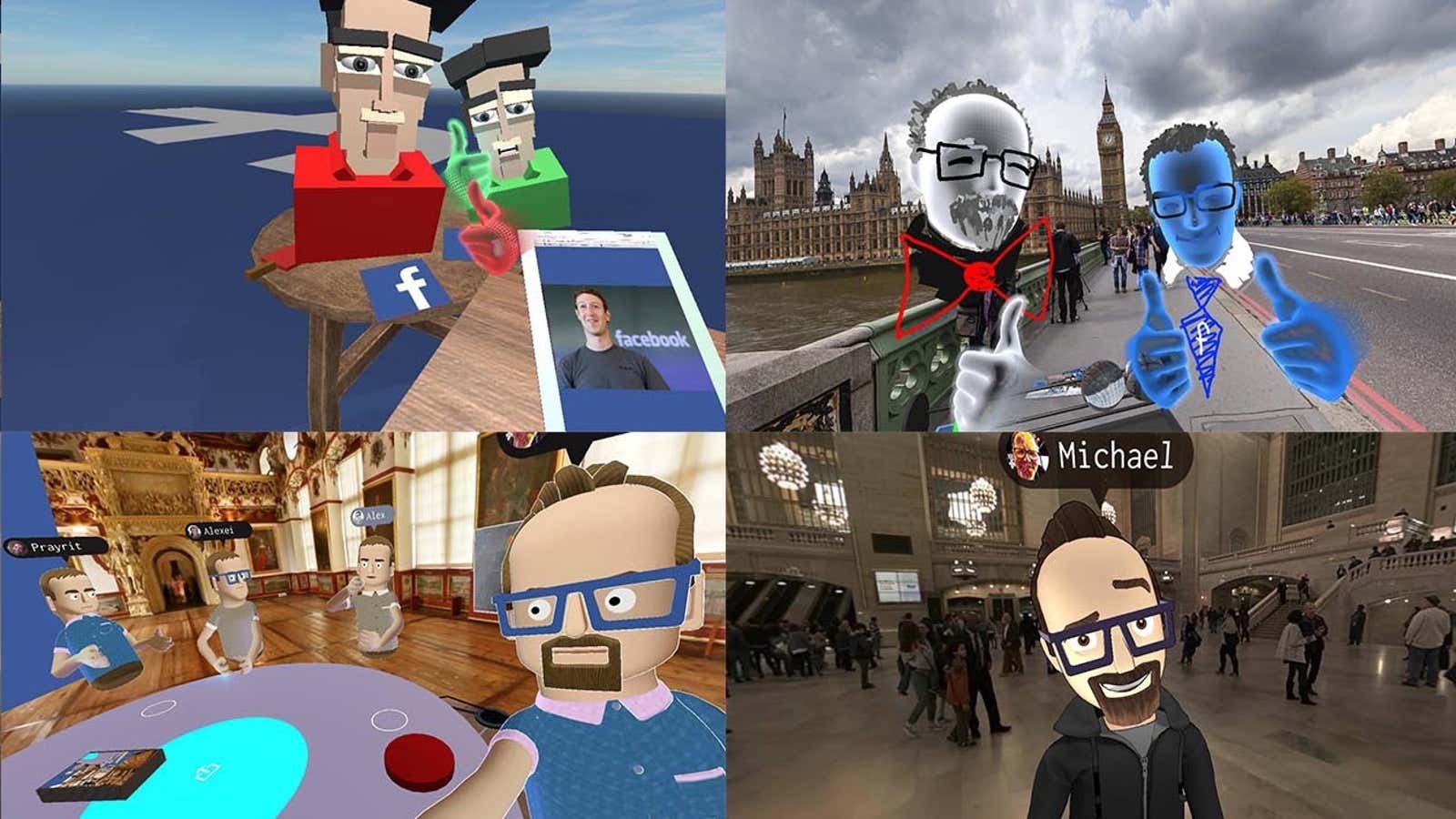Hanging out with your friends thousands of miles away doesn’t have to mean an expensive ticket and long flight.
After dropping hints at the F8 conference in April this year, social virtual reality finally took center stage at Facebook’s third annual Oculus Connect conference today (Oct. 6). The company debuted features that could give users a way to simulate the feeling of being in the same place as friends and family in more intimate ways than video calls allow.
Social interactions aren’t the main focus of the platform yet, CEO Mark Zuckerberg said at the conference, “but it does mean that we should build software and experiences that follow the way our minds work and the way we process the world.” When personal interactions migrate from social media to social VR, the platform needs to be ready for it, he said.
Oculus, which was acquired by Facebook in 2014, was originally a gaming-oriented company, and this new approach will feel familiar to gamers. If you’ve ever player Grand Theft Auto, Sims, or any other simulation games, you already know how this works: creating avatars. In Facebook’s VR world, too, users can choose a variety of facial features and attire options to reflect their real selves. Not only do these virtual doppelgängers have realistic eyes that blink and lips that try to imitate talking motions, they can also express feelings with facial expressions, the company wrote in a blogpost: ”Our avatars can display emotions and expressions like ‘smiling,’ ‘confused,’ ‘skeptical,’ or ‘listening.'”
Facebook demonstrated the ability to share photos, videos, and posts with your friends in VR, much as you do on Facebook itself. You can even take a phone call inside Facebook Messenger, or take a VR selfie to share to Facebook.
The social media platform, with its nearly 1.65 billion monthly users, also showed scenarios in which groups of people could meet up and interact in a virtual spaces known as “Oculus Rooms.” Up to eight people can watch TV together, listen to music, or play chess or cards. The idea isn’t entirely novel: HTC Vive and SteamVR have launched their own versions of room-scale VR this year too.
Oculus Rooms does not have a release date, and you—not to mention your far-off relatives and friends—may not be ready buy a $600-plus Oculus Rift headset yet. So for now, FaceTime and Skype have are likely to remain the go-to.
